If you have four-legged family members running around your house and you love indoor gardening, you’ll want to take stock of the plants you have.
Quite a few indoor houseplants are toxic to your pets. Your favorite plant may cause harm and even be lethal if ingested in sufficient quantities.
Some plants will be more dangerous than others, but any plants that are toxic should be avoided or at least be kept out of reach of your family’s pets.
Here is our list of 11 very common poisonous houseplants for dogs, cats and other pets.
1. Aloe Vera
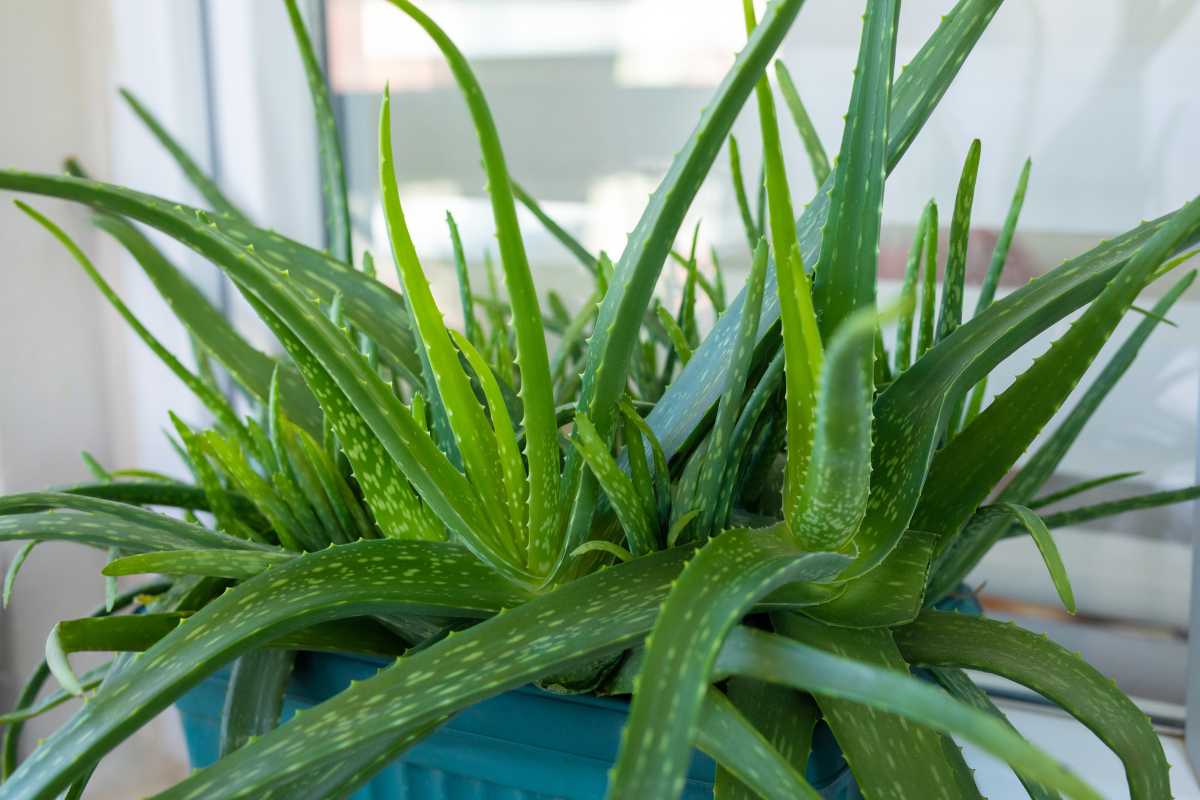
The Aloe Vera is a popular succulent that’s well-known for its healing properties. The watery gel in its leaves is used for burns and insect bites, but it’s also poisonous to both cats and dogs.
The Aloe Vera contains toxic saponins and anthraquinones. If some part of this succulent is ingested, it can cause lethargy, diarrhea, or vomiting.
2. Chinese Evergreen (Aglaonema)
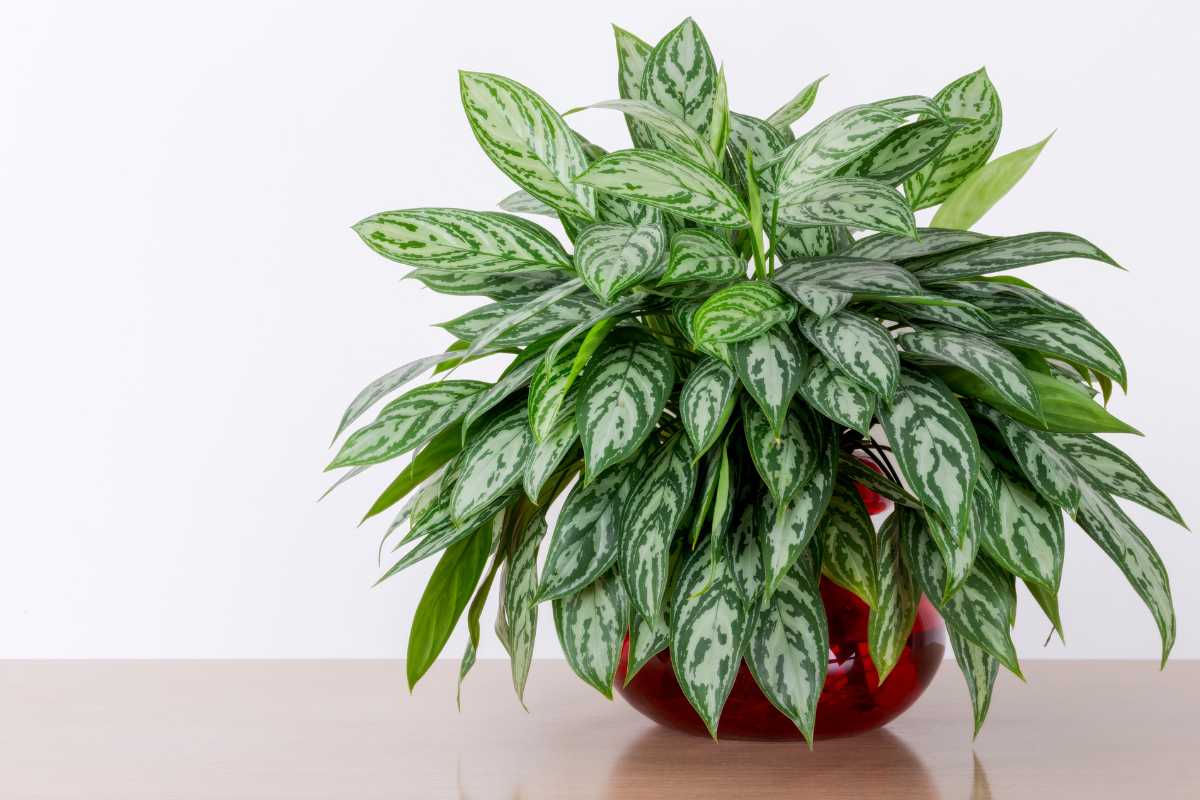
The Aglaonema, popularly known as the Chinese Evergreen, is a decorative houseplant thought to bring good luck to its owner. This is not a good houseplant if you have family pets though.
Considered toxic to both cats and dogs, the entire plant has calcium oxalate crystals. When your pet bites into it, the oxalate crystals are released and can cause swelling in the mouth and throat, as well as gastrointestinal irritation.
Extreme swelling can cause the respiratory airways to close leading to pets not being able to breathe.
3. Cyclamen
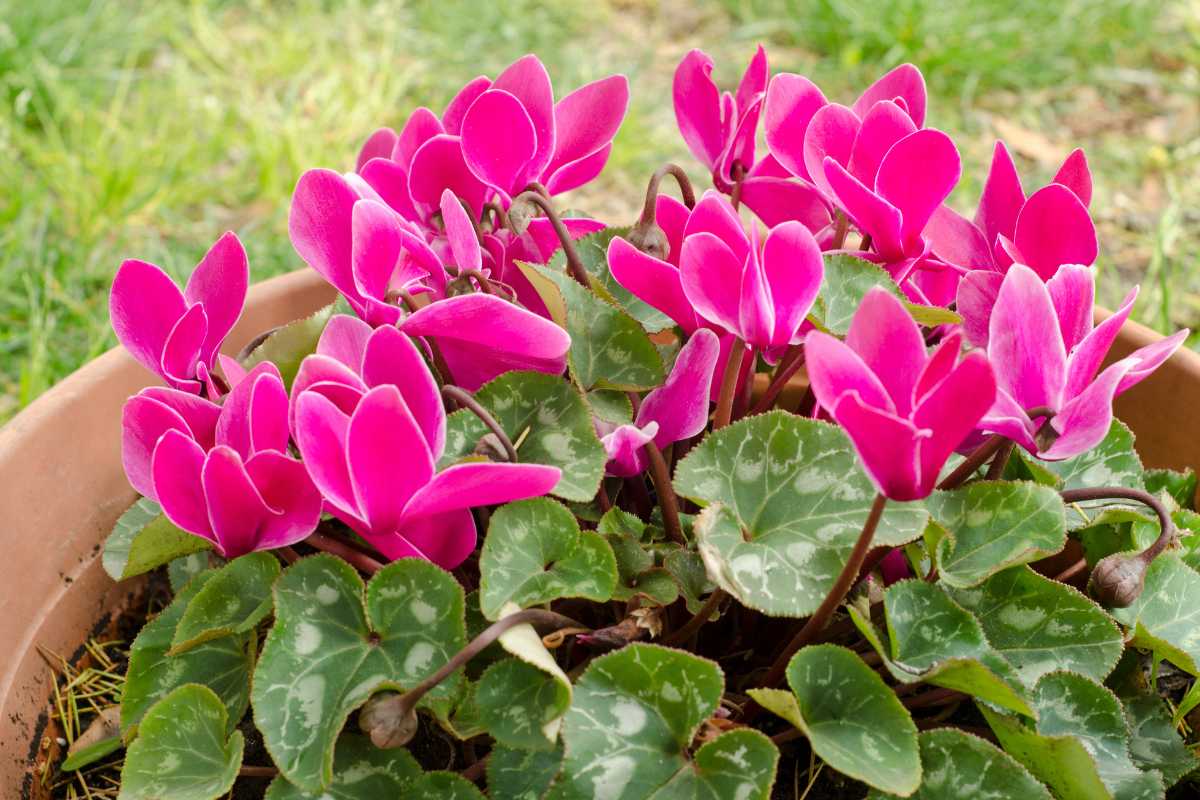
Native to the Mediterranean, the Cyclamen Plant is a blooming plant that is popular during the holidays. But the cyclamen is poisonous and causes severe symptoms in domestic pets.
Poisoning may provoke diarrhea, drooling, vomiting and perhaps the loss of appetite. Severe poisoning can also be the cause of an abnormal heart rate or seizures. This type of poison can lead to death.
4. Dieffenbachia (Dumb Cane)

The Dieffenbachia is a popular houseplant popularly called the “Dumb Cane.” That name originates because chewing this plant will cause a swollen tongue, making it difficult to speak. Dieffenbachia is toxic, especially for house pets.
Its foliage contains calcium oxalate crystals, known as raphides and proteolytic enzymes. These cause swelling and severe burning internally and externally, especially the tongue and lips. Symptoms include vomiting, drooling, and difficulty to swallow.
5. Dracaena
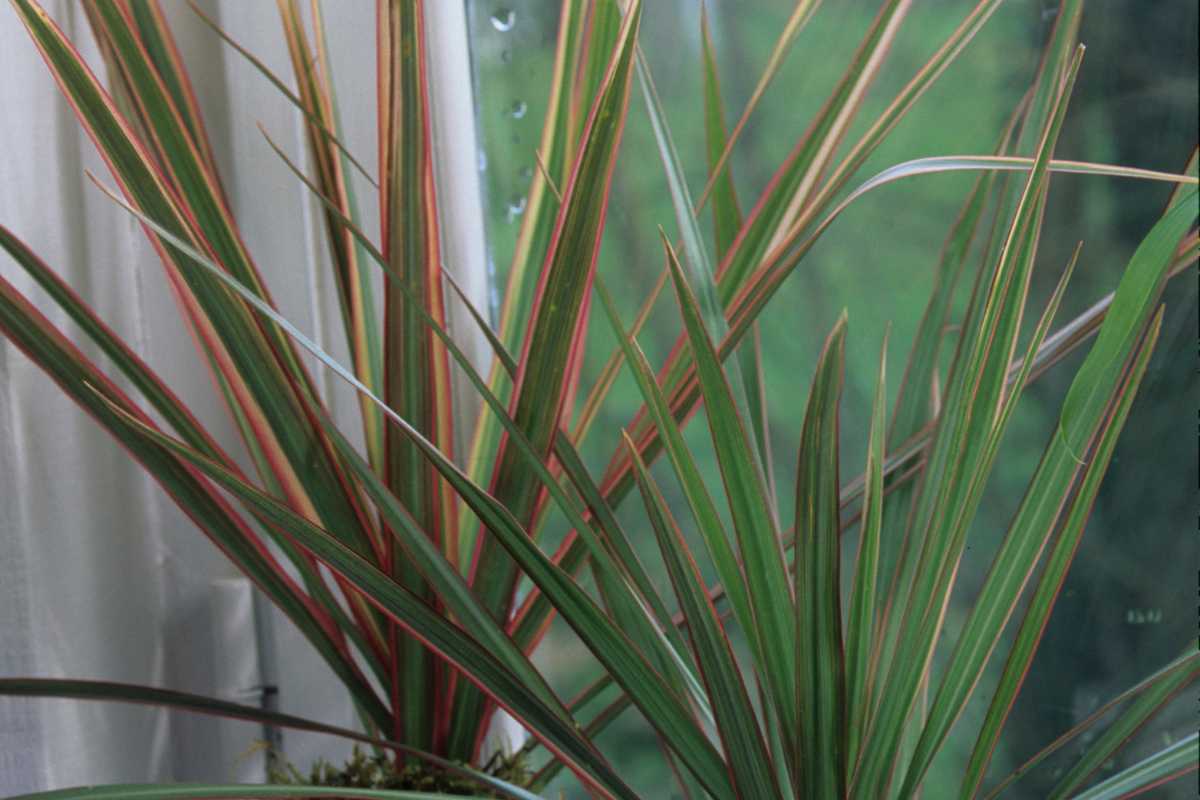
The Dracaena genus hosts about forty different species of this ornamental houseplant. The ASPCA (American Society for the Prevention of Cruelty to Animals) shares that the Dracaena is toxic to cats and dogs because it contains saponins.
When ingested, saponins can cause vomiting (even blood), anorexia, depression, excessive salivation, In felines, you may also see dilated pupils.
6. Kalanchoe Plant
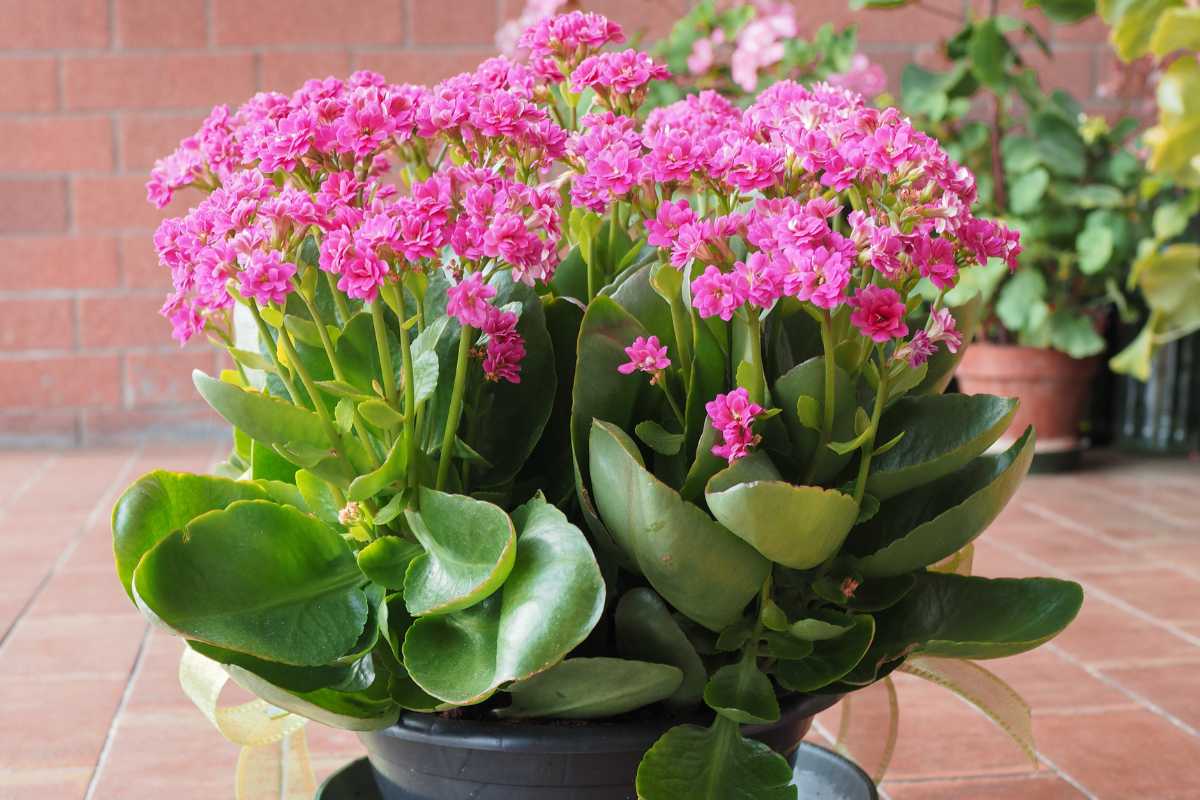
Native to Madagascar, the popular Kalanchoe succulent is a lovely flowering plant. It is popular in homes because they are super easy-to-care-for. Attractive foliage and flowers are characteristic throughout the year.
For all its beauty, the kalanchoe is also highly poisonous to dogs and cats. Blooms and foliage of the Kalanchoe contain bufadienolides. Severe poisoning symptoms include diarrhea, vomiting, and an abnormal heart rhythm.
7. Peace Lily (Spathiphyllum)
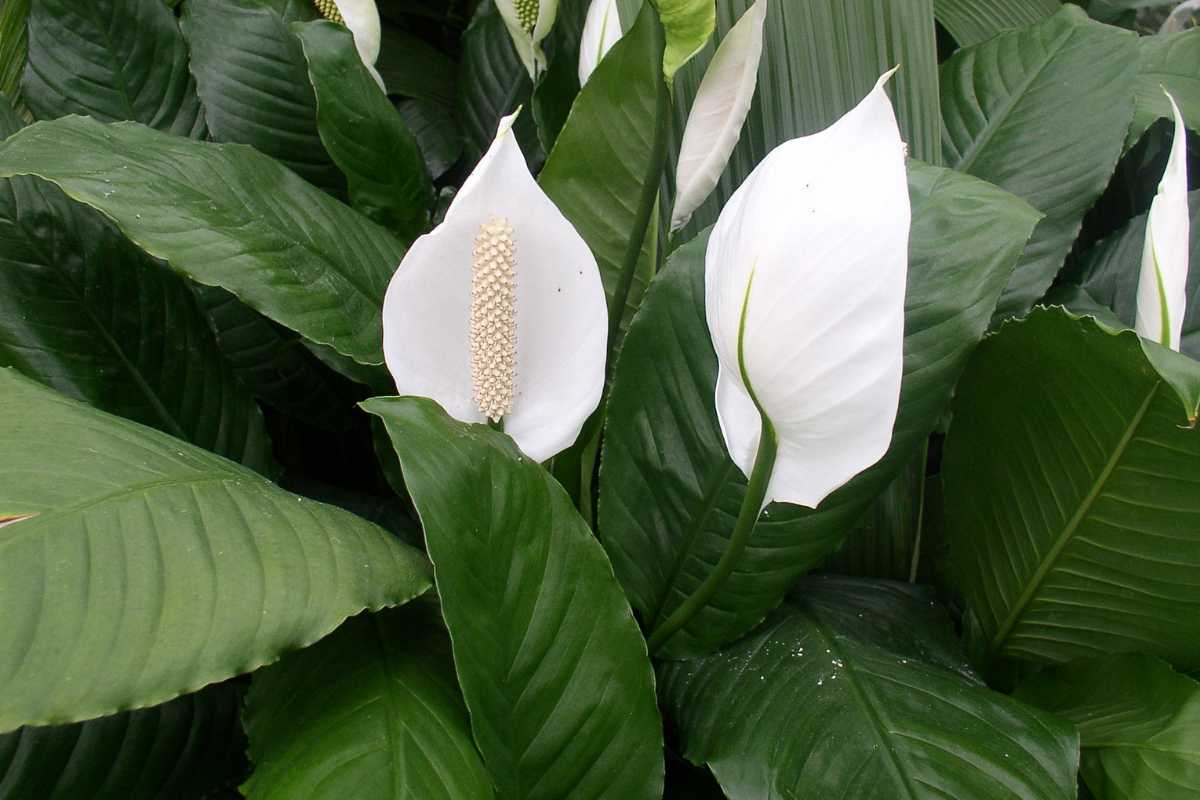
The Peace Lily or Spathiphyllum is a favorite houseplant for many, beloved for its dark green foliage and delicate white flowers. Not an authentic lily, it does, however, look a bit like lilies, hence the common name. Its white flower resembles a calla lily thanks to the white spathe that’s similar to a hood.
The ASPCA lists the peace lily as poisonous for domestic pets, including dogs and cats. Oxalates within the plant cause excessive salivation because it irritates the animals’ digestive systems and their mouths.
Usually, it will provoke an immediate reaction at first bite. Consequently, animals avoid continuing to chew the plant, limiting the risks. Poisoning symptoms include irritation and burning of the mouth, as well as lips and the tongue. Additional symptoms include difficulty swallowing, excessive drooling, and vomiting.
8. Philodendron
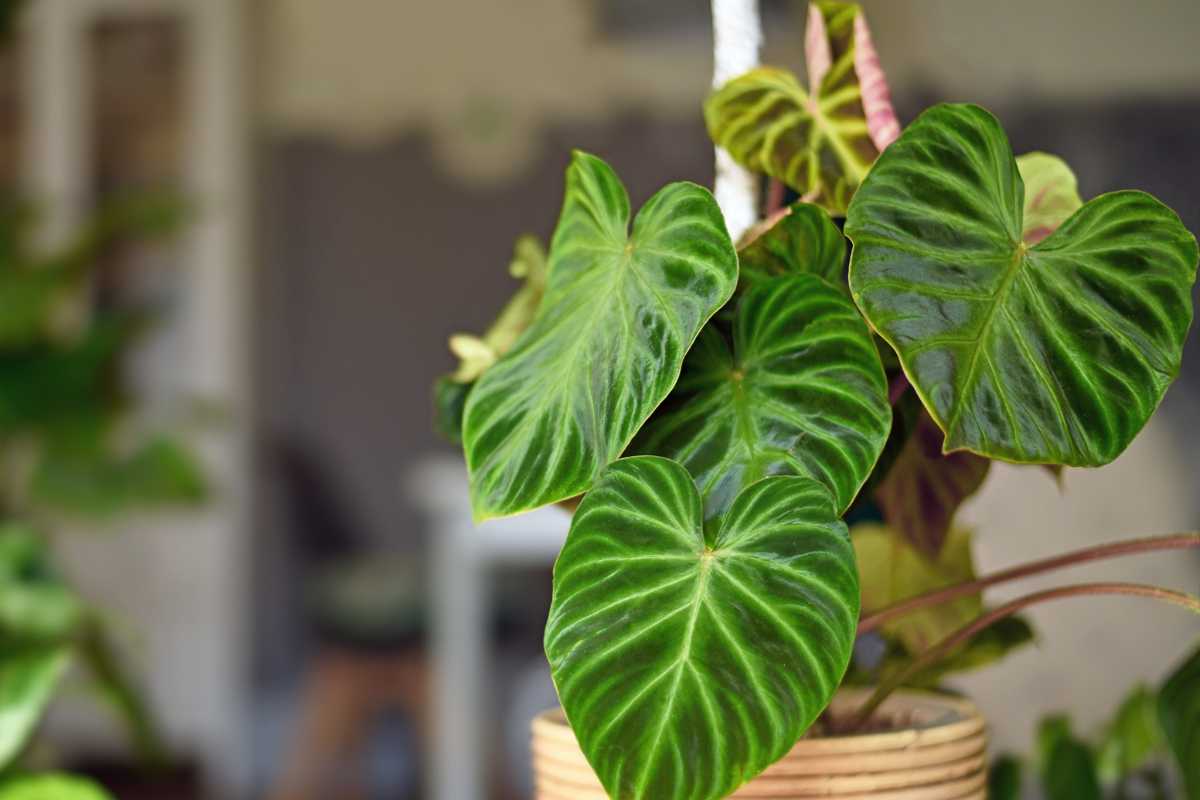
A mainstay as a houseplant, the Philodendron genus has hundreds of species well-known for foliage. A large plant family, the Philodendron comes in various shapes, colors, and sizes.
This plant trails, hangs, and climbs, or can be trimmed into a compact stand-up plant. Native to South and Central America, foliage is quite large, a vivid green, and glossy.
It is poisonous to humans and pets, because it contains a lot of calcium oxalate. Symptoms of philodendron poisoning may include swelling, excessive drooling, diarrhea, blistering and pain inside the mouth and throat, nausea, lack of appetite, and vomiting.
9. Golden Pothos (Epipremnum aureum)
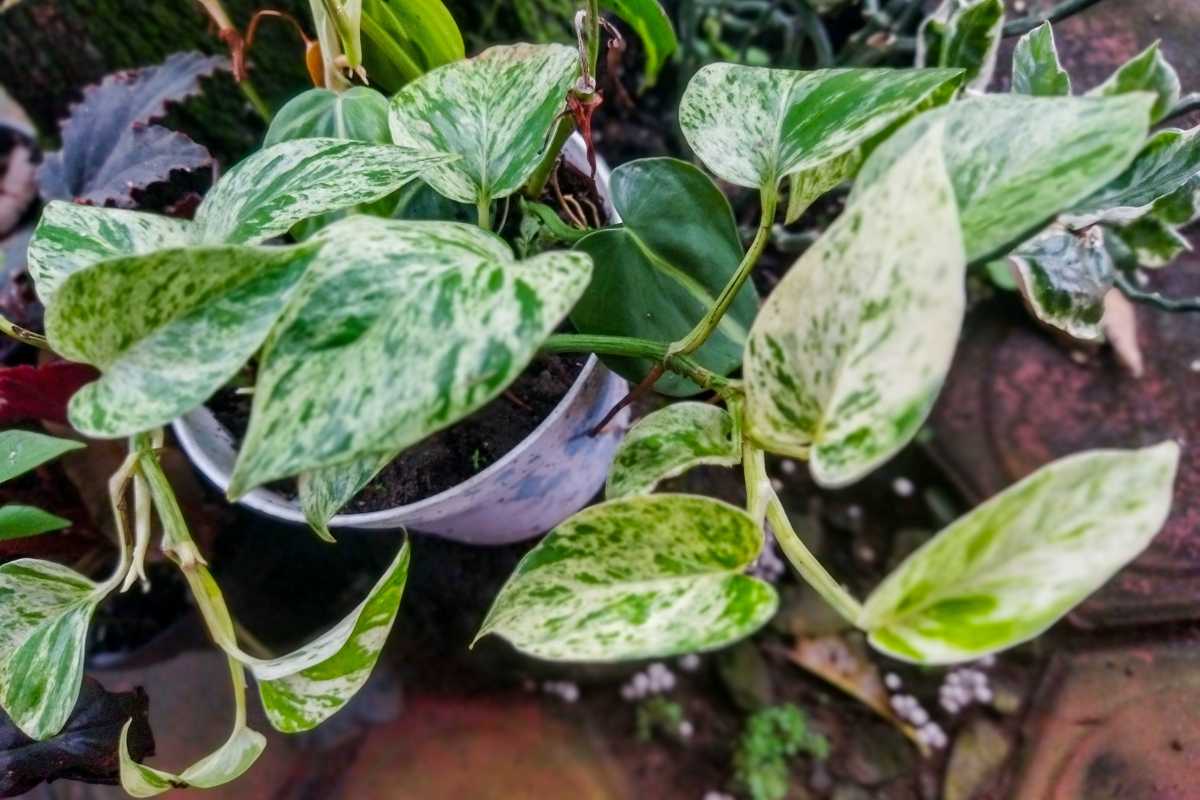
The Golden Pothos is also known as “Devil’s Ivy” and one of the easiest plants to care for. It is a native of the Caribbean, Mexican, and South American tropical rainforests.
Characterized by long jungle vines with vibrant heart-shaped green leaves that are mostly variegated, it thrives in low light, which makes it a common choice for homes and apartments.
Pothos plants are poisonous to humans and animals if they are chewed or ingested. If you have one, it needs to be placed out of the reach of domestic pets, both cats and dogs, because the pothos contains lots of calcium oxalates that disturb the mouth and digestive tract.
If you notice your pet vomiting, drooling excessively, or having difficulty breathing, you may be dealing with pothos poisoning. Symptoms include an irritated mouth, eyes, lips or tongues, excessive drooling, foaming at the mouth, mouth pain or discomfort, vomiting, difficulty breathing or swallowing, your pet pawing at its mouth or oral cavity, loss of appetite, diarrhea, or tremors.
10. Snake Plant (Sansevieria)
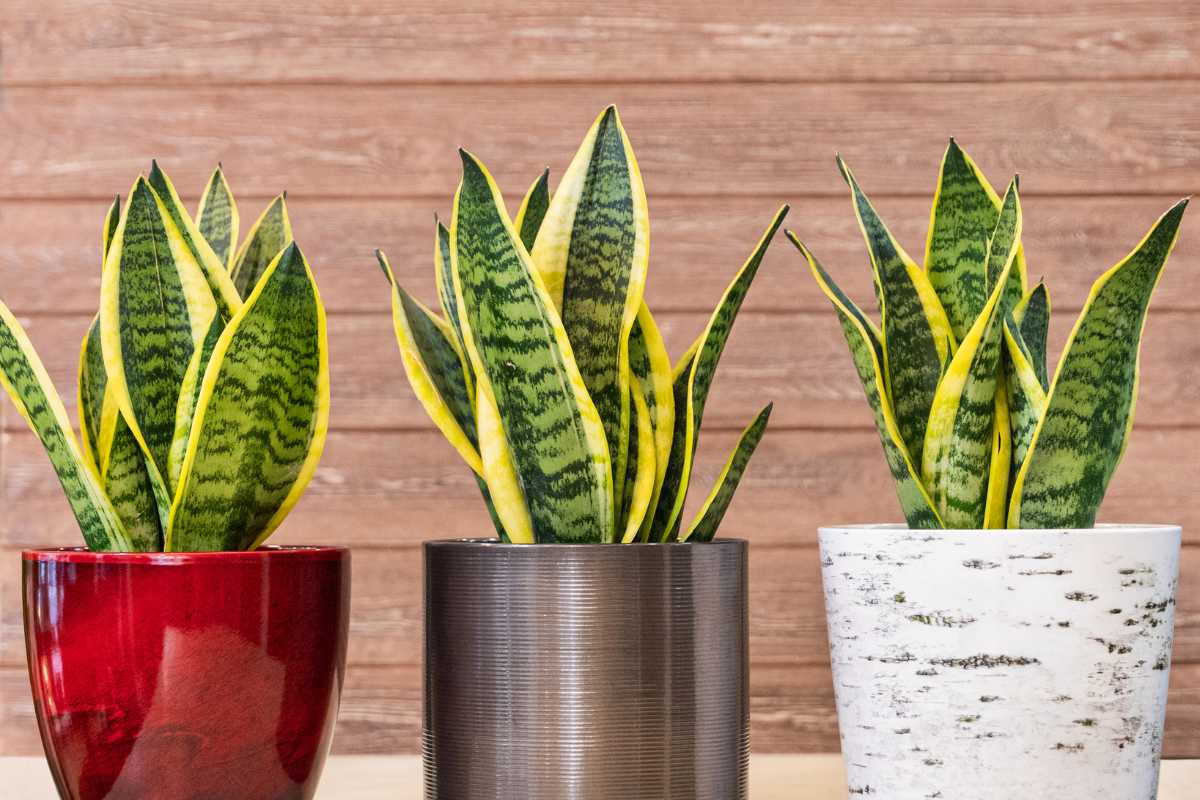
The Snake Plant or Mother’s-in-law Tongue is a low-light plant that needs little care and is drought resistant: Because of this, it is an exceptionally popular plant found in numerous homes and places of business.
The Snake plant is poisonous if it is ingested especially when eaten in large quantities. Containing saponins, the plant can numb the tongue and throat and cause them to swell. Signs of poisoning include diarrhea, nausea, and vomiting.
11. ZZ Plant (Zamioculcas zamiifolia)
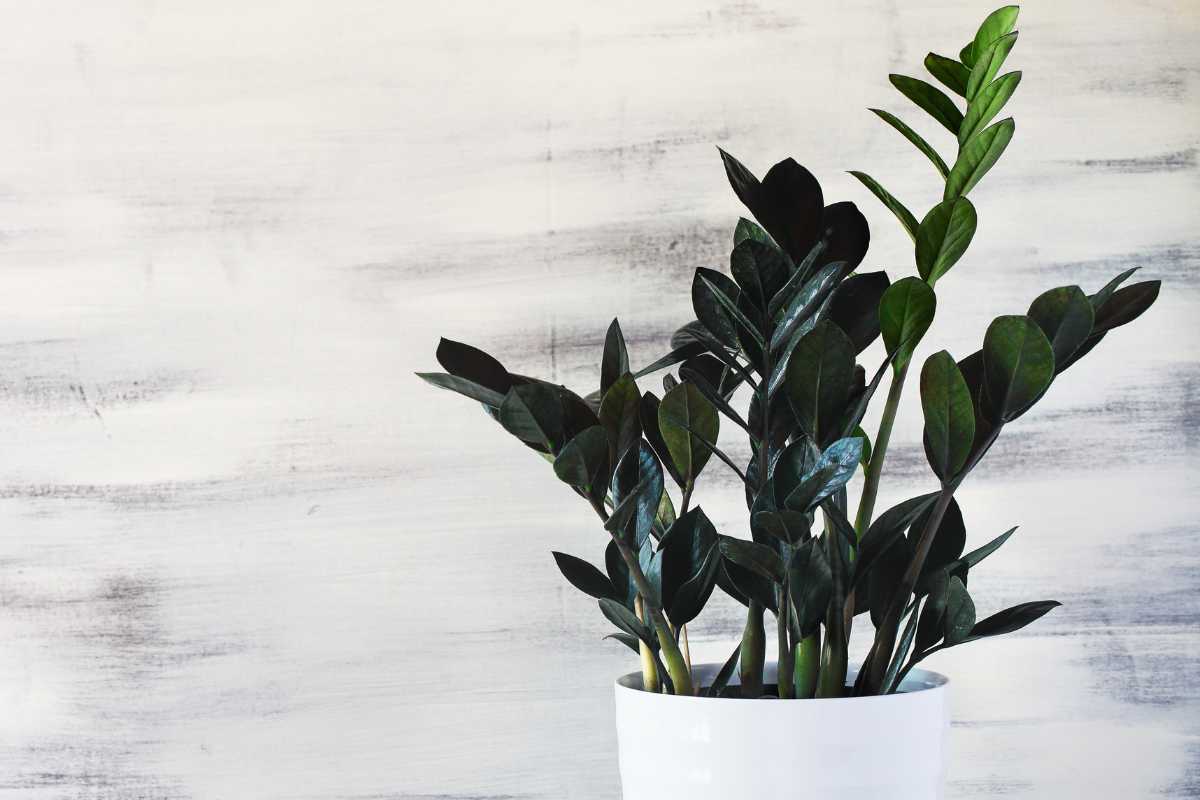
The ZZ plant parts are toxic to humans, cats, and dogs because all the plant parts contain calcium oxalate crystals. These calcium crystals have sharp edges that will irritate any part of the body that they make contact with, especially the digestive tract and mouth.
If your pet vomits, drools excessively, or appears to have breathing problems, you might want to suspect ZZ plant poisoning. The poisoning signs exhibited include difficulty breathing , diarrhea, excessive salivating, foaming at the mouth, irritated eyes, lips, and tongues, loss of appetite, swallowing difficulties, tremors or vomiting.
If you see any of these, find your pet clawing at its mouth or even suspect that some part of your ZZ plant has been chewed on or swallowed, you will need to intervene immediately.
What to Do in Case of Pet Poisoning
If your pet ingests a poisonous houseplant, you’ll want to step in right away:
- Identify the plant and evaluate the symptoms
- Contact your veterinarian or your poison hotline
- Avoid giving your pet anything unless so directed by a veterinarian or poison expert
- Bath your pet if the toxin exposure is external and limited to the skin
- Take your pet to the nearest animal hospital or veterinarian in your area immediately.
Prevention of ingestion of poisonous plants is always the best. Be sure to keep the plants out of reach for pets (and even small children).
Poisonous Houseplants For Dogs vs Cats
There is no difference between poisonous plants for dogs and cats. The same plants that are poisonous to dogs are also poisonous to cats.
However, there are can be differences between how each species reacts to chewing and ingestion of plants. Some plants are more likely to affect dogs than cats, while others are more dangerous to cats than dogs.
Poisonous Houseplants Final Thoughts
Pets and plants are both an important part of our lives and with some care, both can live together without exposing our beloved furry family members to unnecessary risks.
Here are other popular lists of houseplant lists to help people choose plants to add to their garden:











